Winter Wahoo
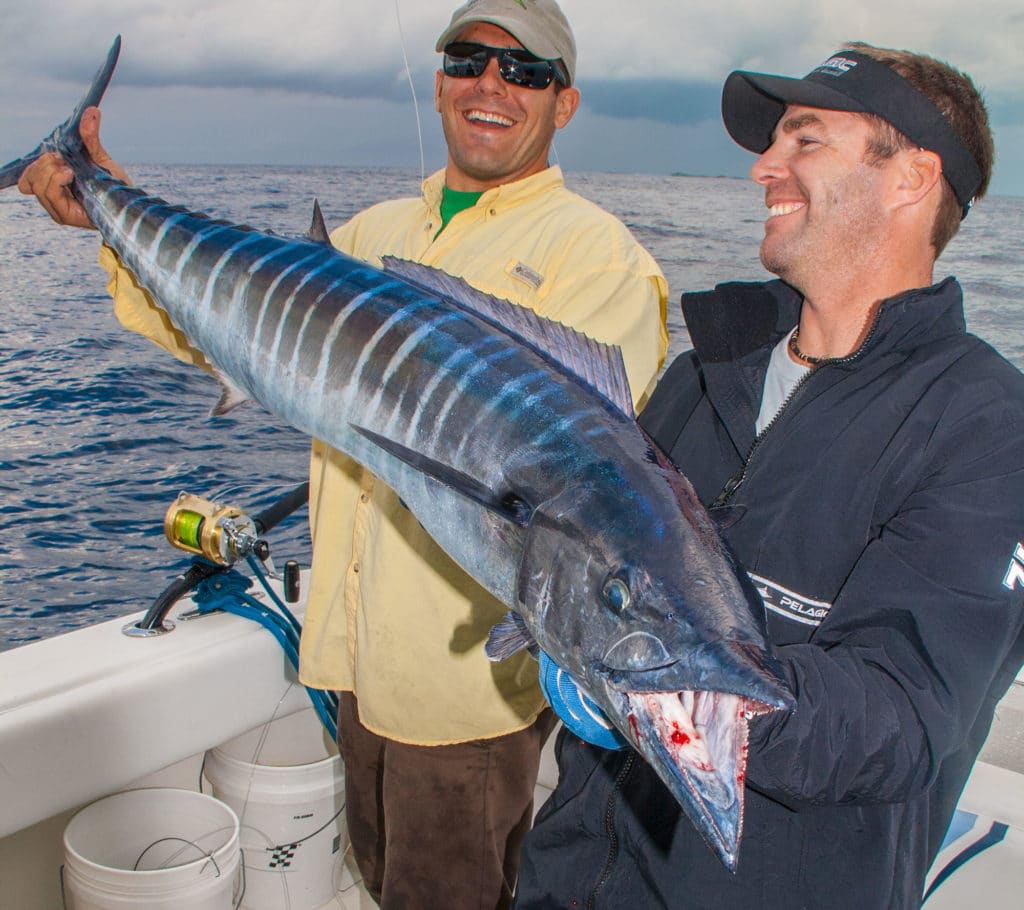
Fishing the edge of the Bar off Key West, on the outside reef, Capt. R.T. Trosset targets wahoo with live speedos, bullet bonito or blue runners. Anywhere there is an irregularity in the reef, such as a high or low spot, it’s liable to attract wahoo. The best fishing conditions are during an east current or when the Gulf Stream edge moves in close to the reef, he says.
“The top fishing times are five days before the full moon and five days after in December and January,” says Trosset. “Also, mid-June to July can be hot, especially under flotsam in 200 to 2,000 feet.”
Once you hook one, keep fishing hard: Wahoo often school together, and you catch more. “I like fishing with live baits for the spectacular, skyrocketing bites,” he says. “I’ve caught more than 20 in a day, averaging 25 to 60 pounds.”
Around flotsam, Trosset trolls deep-diving purple-and-black bombers, or he’ll jig metal or bucktails 200 to 300 feet below the object. For live-baiting, chunking or jigging, Trosset prefers to use Fin-Nor 6500 spinners with 30-pound braid. For conventional setups, he opts for a Fin-Nor Marquesa 30 on a Tidal rod with 50-pound braid.
Explosive Tuna
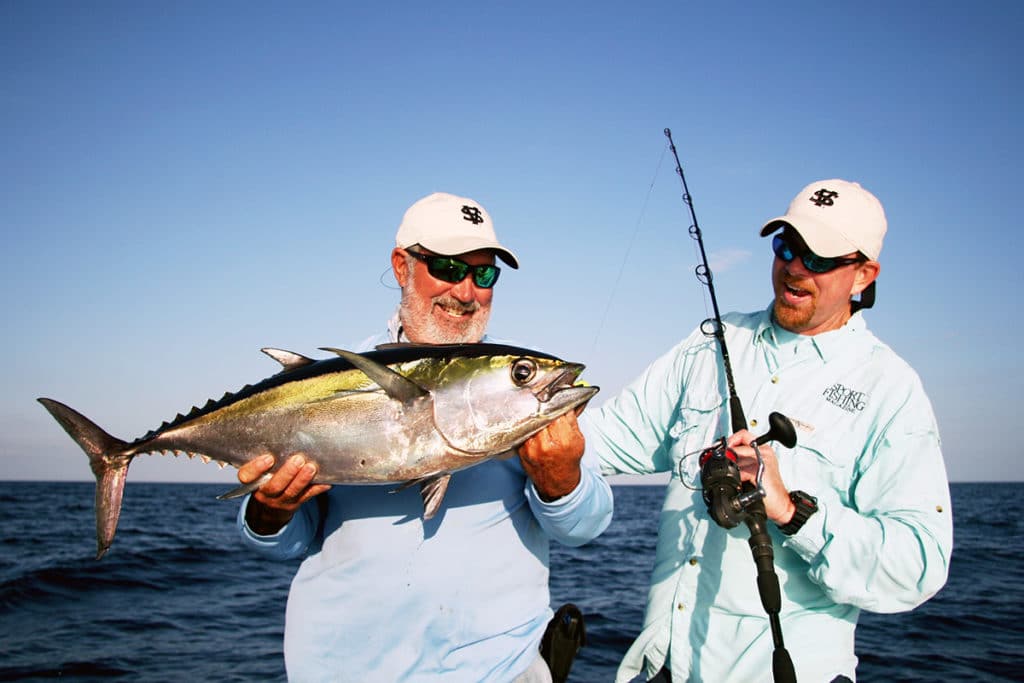
For those who enjoy the promise of active fishing inherent in both jigging and popping, Key West in winter is hard to beat. Anglers well equipped can enjoy a variety of situations. Start trolling just a few miles from Key West where the bottom drops away from the shallow outer reef. You might soon find yourself in the midst of multiple schools of blackfin tuna, prowling the surface and tearing up baitfish.
Capt. Trosset runs just upwind of a frenzy and pops the power into neutral, so anglers can fire lures and jigs into the commotion. The whole area can remain alive with explosive blackfin pods for hours. Small lead-head jigs are hard to beat, perhaps mimicking the tiny jacks on which the tuna gorge. But they also climb all over small to medium topwater plugs, and the strike alone is worth the price of admission.
Madness on the Reef
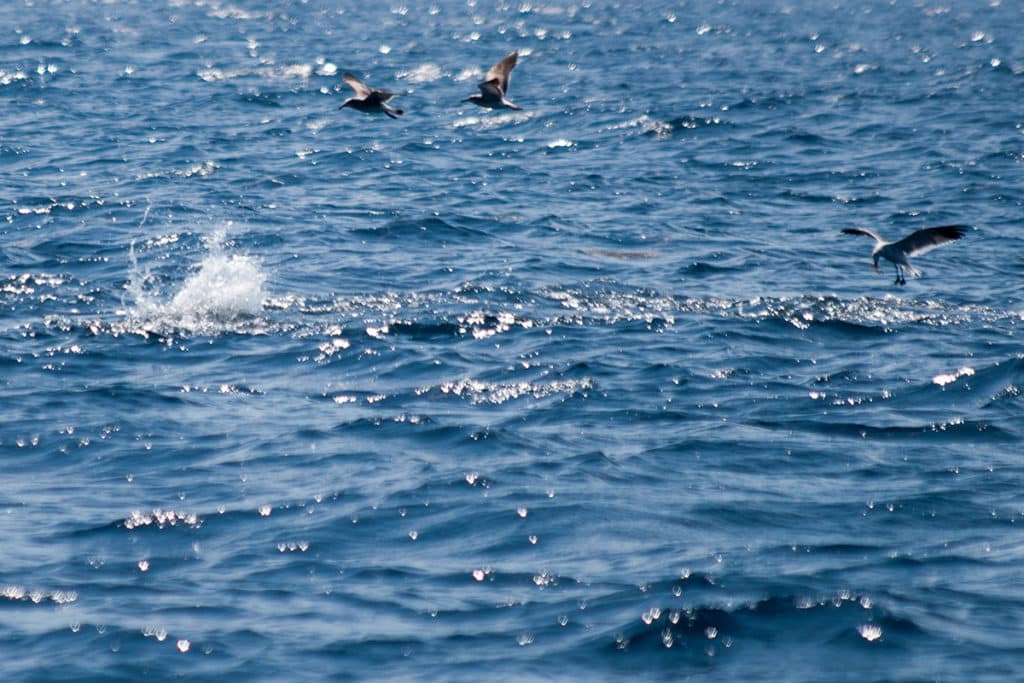
Starting at some point in December and on through winter, big fish “cruise the edge of the reef, from Cosgrove to the buoy, and come up to crash the hell out of the ballyhoo!” Trosset says. “We look for the frigate birds,” he says, then get anglers ready to cast. “You throw a topwater into that, and you’ll get hit 95 percent of the time. And it can be anything!”
Trosset lists blackfin tuna, sailfish, little tunny, kingfish, cero mackerel, big yellowtail snapper, bar jack, jack crevalle and occasionally mutton snapper as among the game fish mixing it up underneath bunches of frantic ballyhoo.
“Sometimes we even get good gaffer dolphin — 12- to 20-pounders — up there when they’re chasing ballyhoo.”
Little Ledges Hold Big Surprises
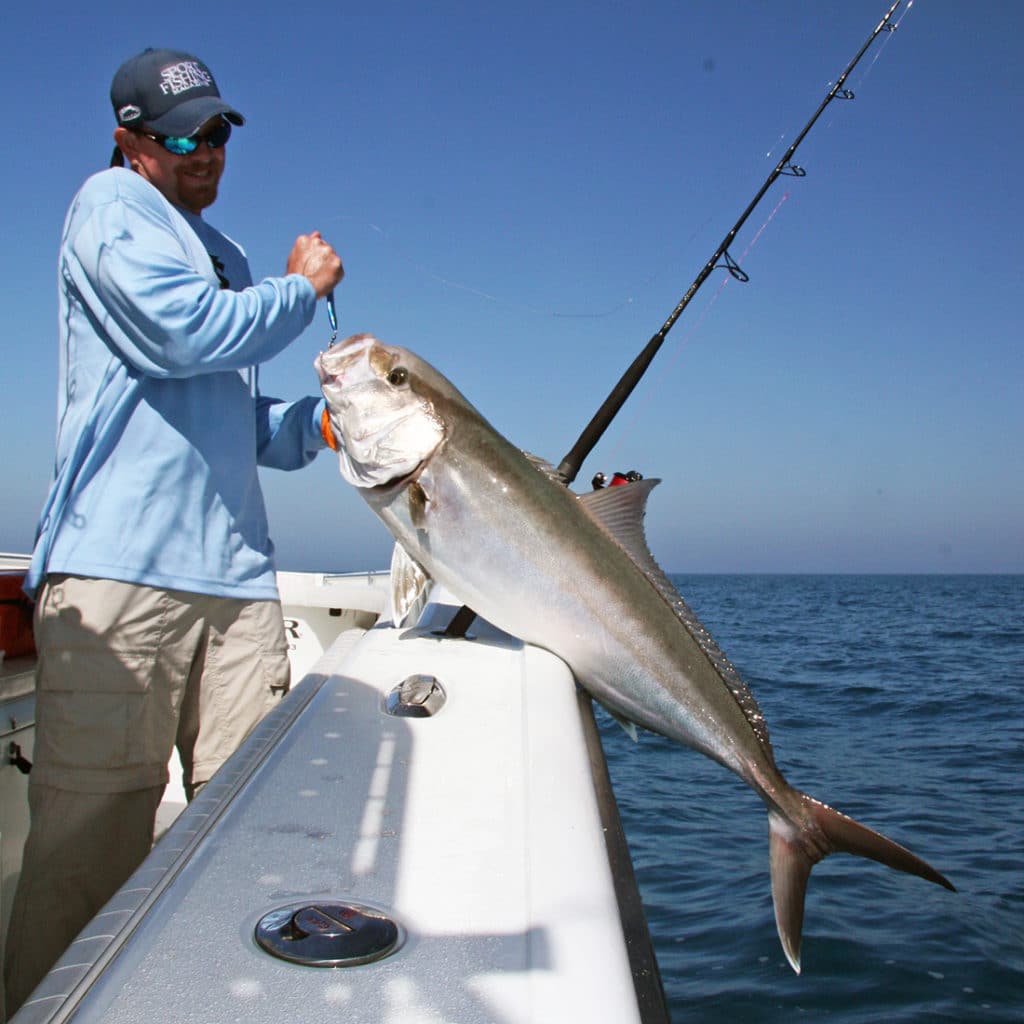
In addition to fishing small ledges, Trosset has the option to put anglers over any of quite a few wrecks. The upside is that these offer a larger target to hit when dropping metal deep than does a small ledge. They also hold good concentrations of fish (typically including the most and biggest AJs). The downside is that unlike the little ledges for which many numbers fill Trosset’s GPS, wrecks are hardly a secret and get more fishing pressure more consistently.
Trosset points out there’s always the chance of finding new small ledges or slightly elevated hard-bottom spots since many remain uncharted. He recommends keeping a jig rod or two armed and ready for a stop ’n’ drop when the sounder shows something interesting while trolling. He recommends jigs that are in the shape of Bomber Saltwater Grade’s Darters (versus very long, skinny jigs), noting that he seldom needs to go to jigs heavier than 4 ounces. And of course, he’ll tell you that lead-heads with plastics still get great results (though these might be needed in weights heavier than metal jigs, since the latter tend to sink more effortlessly into deep water).
Tournament Sailfishing Hits High Gear
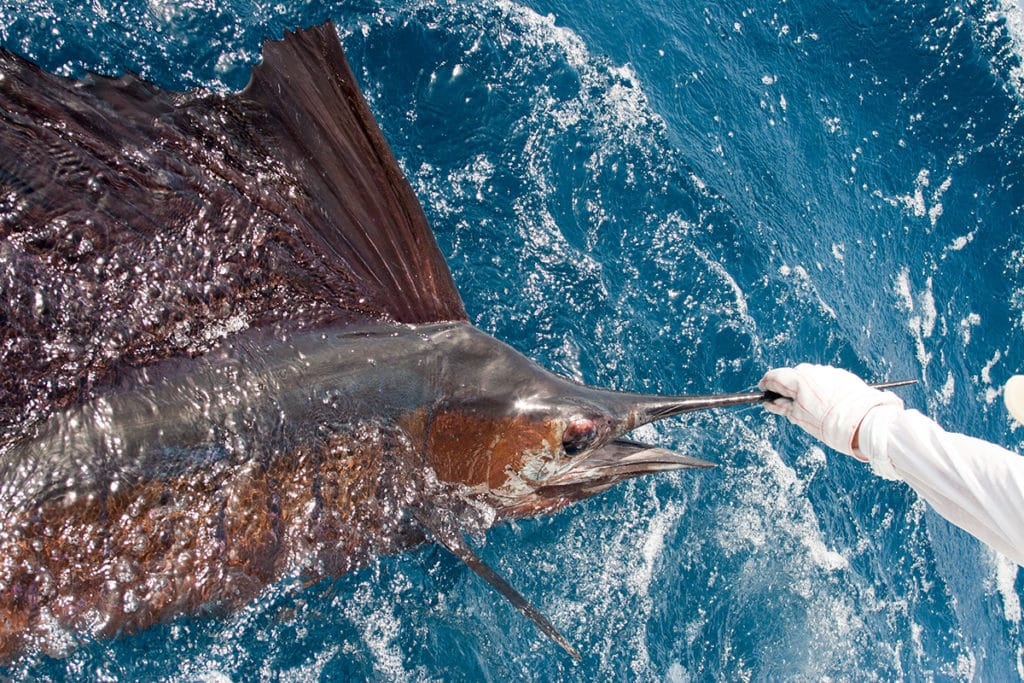
Up to 25 boat teams of elite sport fishermen are to compete in the Florida Keys Gold Cup Sailfish Championship series held in the waters off Islamorada, abiding by rules that strongly emphasize conservation and sportsmanship. Fishing is scheduled Friday through Sunday, Dec. 2-4, with an awards ceremony Sunday.
If a minimum 14 boats register in the overall Gold Cup Series, $20,000 in prize money is to be awarded. Amounts increase as the number of registered boats increases.
Each of the three tournaments in the series operates independently with its own set of rules and entry fees. At least one angler must be entered and paid for all three series events by the kickoff of the Islamorada Sailfish Tournament, first in the renowned triple-crown sequence.
A primary fundraiser for the Islamorada Charter Boat Association, the Islamorada Sailfish Tournament is the only event in the series to offer a junior division for anglers age 16 and younger. The all-release boat event opens with pre-registration Thursday, Dec. 1. An unlimited number of anglers is allowed per vessel.








